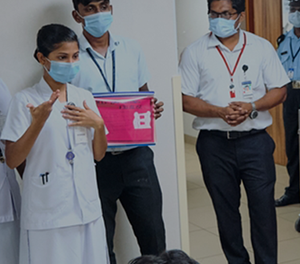Ear, Nose & Throat and Audiovestibular services
The doctors, registrars and staff of Department of ENT at CMC Vellore focused on the treatment of ear, nose and throat conditions in adults and children. This will include problems in hearing and deafness, ringing in the ears, vertigo (dizziness), noses that are very stuffy or runny all the time, tonsil problems, cancers of the ENT areas etc.
The Department strives to excel through service research and provides the highest level of training to future otolaryngologists. All five units offer medical and surgical care for common ENT conditions in adults and children over 4 years. General ENT – common problems such as otitis media, hearing loss, tonsillitis, allergic rhinitis, sinusitis and dizziness – constitutes 70 percent of each unit’s work.
The unit-wise specialisations include:
Unit 1: Head and neck conditions, including tumours and endoscopic skull base surgery;
Unit 2: Special paediatric problems for under-4-yearolds, including congenital disorders, airway problems and cochlear implants;
Unit 3: Specific nasal conditions such as fungal infections, nasal and sinus tumours, corrective nasal surgery and endoscopic skull base surgery.
Unit 4: Ear and hearing, balance disorders and chronic dizziness, including specialised surgery for dizziness and hearing, cochlear implants and lateral skull base surgery;
Unit 5: Laryngeal cancers and voice, swallowing and airway disorders, including 24×7 cover and surgery for laryngeal trauma.
The Department has outreach clinics in the Community Health department, RUHSA, the Chittoor campus hospital and the Shalom Family Medicine Clinic.
Out Patient Clinics
ENT unit 1 Monday, Thursday
ENT unit 2 Tuesday, Friday
ENT unit 3 Wednesday, Saturday
ENT unit 4 Monday and Friday
ENT unit 5 Tuesday and Friday

